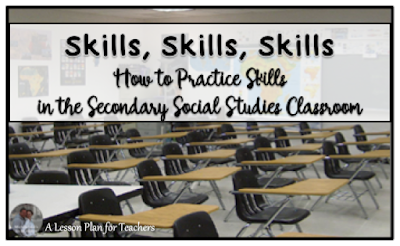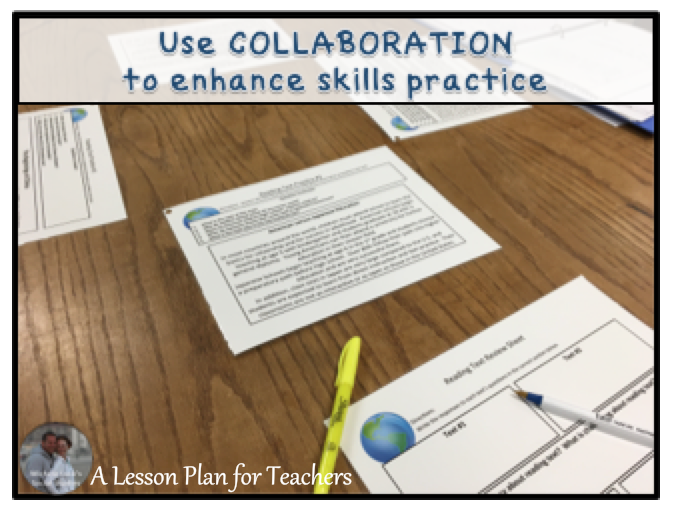
Basic Skills for the Secondary Social Studies Classroom
To make your planning easier, here is a simple list of those skills with simple descriptions. These are often found in state, national, and organizational standards, but more importantly, they are the foundations for teaching Social Studies.
- Reading for Content – looking for main ideas, key vocabulary, and historical significance
- Annotating Text – rewriting text for content understanding or to provide explanation
- Primary Source Analysis – determining meaning, context and significance in original sources
- Image/Video Analysis – determining meaning, context and significance in visual media
- Chart & Graph Reading – breaking down content provided in graphical form
- Map Reading – examining the places and themes provided on maps and globes
- Determining Cause & Effect – reviewing the steps or stages in events or eras
- Examine Varying Perspectives – looking at different points of view for historical understanding
- Making Judgments and Predictions – making conclusions on key topics and forecasting outcomes

Implementation Ideas for the Basic Social Studies Skills
- Use collaborative activities to encourage analysis of content and further discussion of key ideas.

- Set up learning stations or walking tours to review large amounts of content and assign text or image annotation for reinforcement.
- Begin each unit with a content-related mapping activity to establish location and place, helping students better understand the Geographic impact on History.
- Introduce real world images, video, charts and graphs from current events to make connections between the past and present.
- Have students create annotated and illustrated timelines to summarize unit content, to examine cause-and-effect, and to determine conclusions or make predictions.

Important Tools for Practicing the Basic Skills
Finally, it is important to have all the tools needed for students to thoroughly examine, consider, and process information in the Social Studies classroom. While rulers and calculators are vital for teaching Math, in the Social Studies classroom, highlighters, markers, and colored pencils are must-haves. Have them on hand and ready to go for mapping , annotation, and all of the other skills discussed in this post.
Want more information on teaching basic skills and other strategies for the Secondary Social Studies classroom? Be sure to read other posts in my How-To Series to learn how to bring your Social Studies classroom to life with engaging, content-strong lessons, resources, and teaching methods.

Happy Teaching!